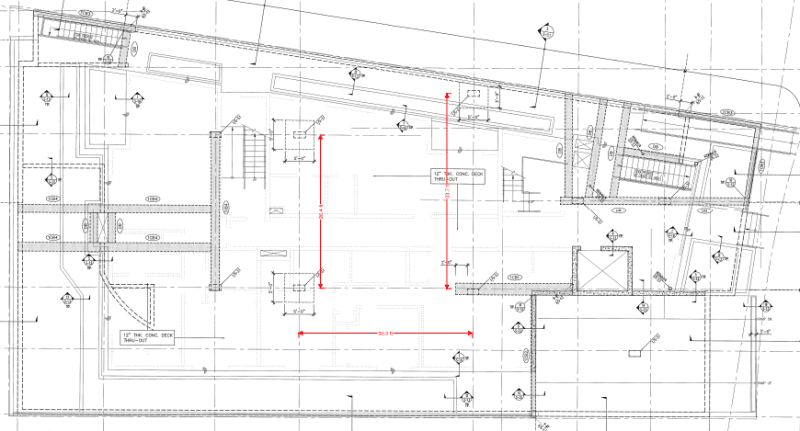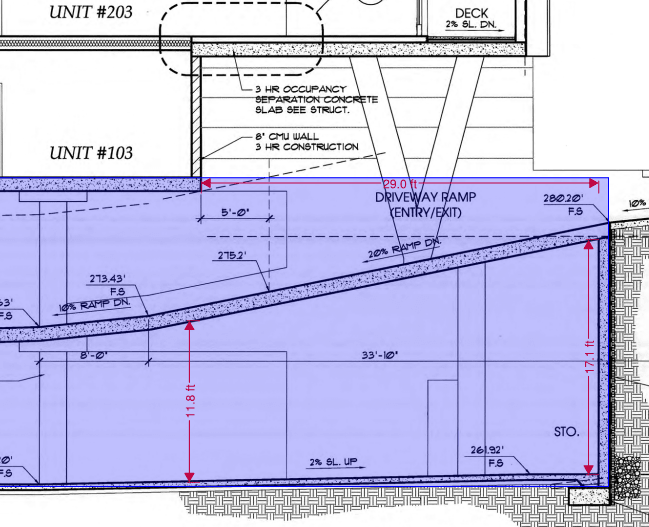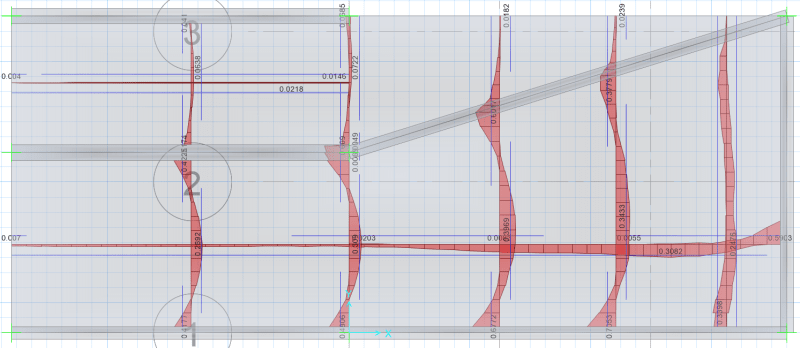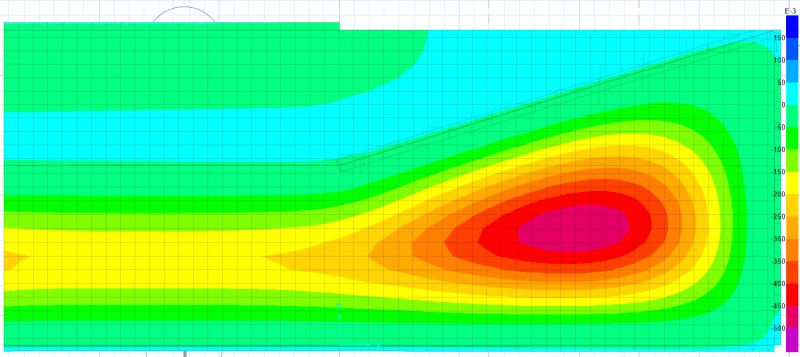hotmailbox
Structural
Hi all,
I was hired as a structural observer for a residential project in LA 5-story wood over 2-story garage basement) since the EOR refused to work with the new owner of the project. The contractor just poured half of the foundation. When I reviewed the structural slab I found some area in the podium slab are extremely congested and I don't think it's feasible and safe to do so. Please see pictures below for additional top bars in a 12foot strip each way on top of #7 @ 12" o.c. each way. That means you have to place 60 #7 bars each way within a 12foot strip leaving 1.5" clear gap between bars (if bars are perfectly placed evenly). Below these two reinforcing mat is a concrete beam with #3 ties @ 4" o.c. and longitudinal bars. I sent an email to the EOR for his opinion but I don't think he would ever respond.
So there are few options for the owner:
1. Keep building per plan and hope nothing happens.
2. Hire me to redesign the entire slab for better bar replacement (this would cost a lot and project gets delayed for revision approval).
3. Me suggesting using bigger bars for better spacing between bars but keeping the same steel area per foot but I really don't want to make such change without EOR blessings. This is the first time I am structural observer for someone else's project, I don't know all the pitfall I need to avoid other than making sure everything is built per plan.
Do you think my concern is valid? Is this still feasible? Code wise, it is acceptable because clear spacing is at least equal to the greatest of 1 inch, db, or (4dagg/3). When I design structural slab I always try to make sure clear spacing between bars to be 3" minimum.
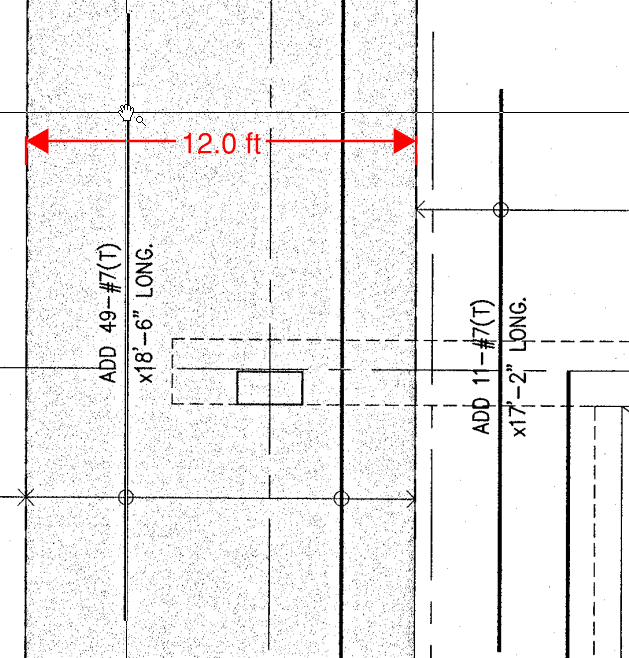
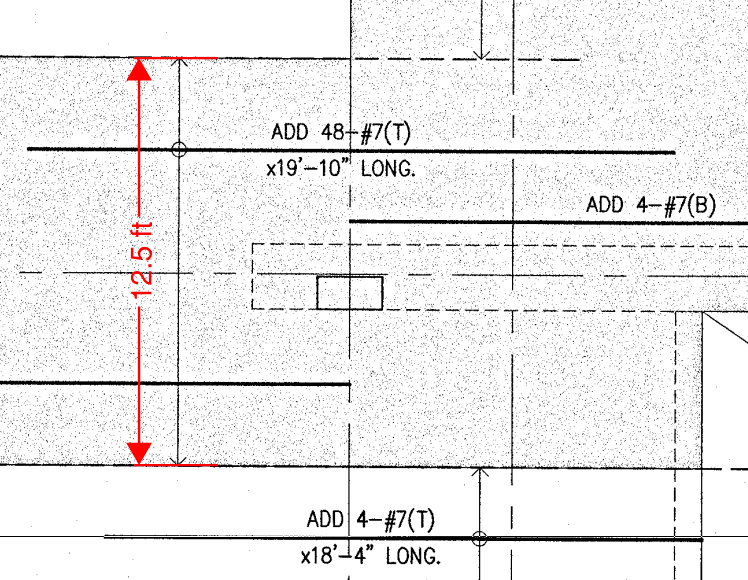
I was hired as a structural observer for a residential project in LA 5-story wood over 2-story garage basement) since the EOR refused to work with the new owner of the project. The contractor just poured half of the foundation. When I reviewed the structural slab I found some area in the podium slab are extremely congested and I don't think it's feasible and safe to do so. Please see pictures below for additional top bars in a 12foot strip each way on top of #7 @ 12" o.c. each way. That means you have to place 60 #7 bars each way within a 12foot strip leaving 1.5" clear gap between bars (if bars are perfectly placed evenly). Below these two reinforcing mat is a concrete beam with #3 ties @ 4" o.c. and longitudinal bars. I sent an email to the EOR for his opinion but I don't think he would ever respond.
So there are few options for the owner:
1. Keep building per plan and hope nothing happens.
2. Hire me to redesign the entire slab for better bar replacement (this would cost a lot and project gets delayed for revision approval).
3. Me suggesting using bigger bars for better spacing between bars but keeping the same steel area per foot but I really don't want to make such change without EOR blessings. This is the first time I am structural observer for someone else's project, I don't know all the pitfall I need to avoid other than making sure everything is built per plan.
Do you think my concern is valid? Is this still feasible? Code wise, it is acceptable because clear spacing is at least equal to the greatest of 1 inch, db, or (4dagg/3). When I design structural slab I always try to make sure clear spacing between bars to be 3" minimum.



